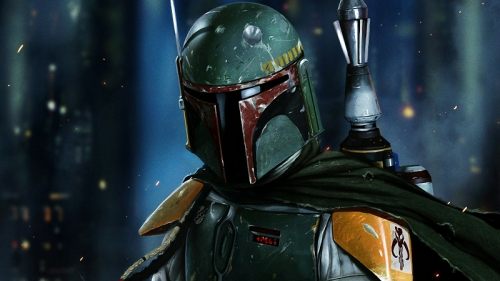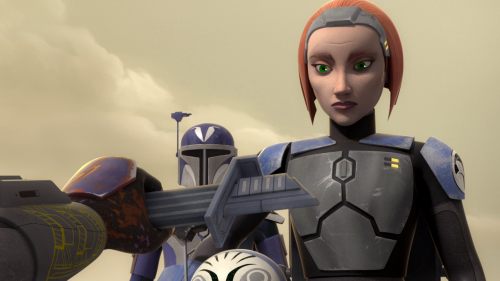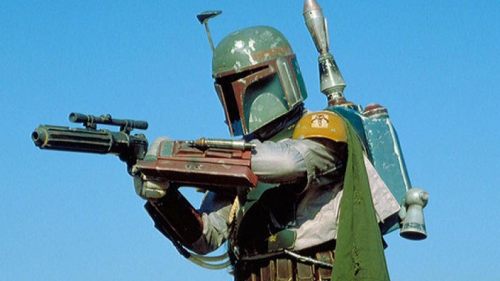Ended, THE CLONE WARS Has
Minor spoilers for CLONE WARS and REBELS.
Today is May the 4th. We call it Star Wars Day because some person realized that if you say “May the force be with you” while making fun of someone with a lisp, it sounds a bit like an actual date. Or close enough to make some money, anyway.
You can celebrate a few different ways. Announcing big STAR WARS news is one. You could watch RISE OF SKYWALKER on Disney+, though I don’t know why you’d want to. Or, and this is the one that gets my vote, you could watch “Victory and Death”, the final episode of THE CLONE WARS. Then again, if you haven’t watched much CLONE WARS stuff leading up to it, the episode probably won’t do much for you.
THE CLONE WARS has had an interesting journey. It petered out before its time, releasing a somewhat cobbled together sixth season on Netflix when it was prematurely taken off Cartoon Network. That was in 2014. In the meantime, we got four seasons of STAR WARS REBELS, which mostly did its own thing, but at its very best functioned as a CLONE WARS sequel, offering continued stories for CLONE WARS’ best characters - Ahsoka Tano, Rex the Clone Trooper, and Darth Maul. Original REBELS characters were fine but never got the full heft enjoyed by this trio. The STAR WARS animated efforts, across two different shows, really belongs to them. So it’s fitting that THE CLONE WARS’ final arc belong to them as well. “Victory and Death” offers an emotional conclusion if not a chronological one.

News that Disney+’s overwhelming need for content would justify a seventh and final season of CLONE WARS was met with major excitement for those who had been following the show this whole time (not me; I’m a new convert, I must admit). When it finally arrived, it did not seem worth the wait. The season consists of three arcs, starting with a fun but small one about a crew of aberrant clone troopers, then followed by a very bad one about Ahsoka Tano’s post-Jedi adventure in Coruscant.
But then the third arc began with new title cards and dark, foreboding music. Something very different was about to take place. The idea was that we would finally witness the Siege of Mandalore, but was that alone worth the added pomp and weight of this divergence in presentation? It turned out no, this was something even bigger than a legendary siege. Events on Mandalore were happening simultaneously with REVENGE OF THE SITH and Anakin’s turn to the dark side. The show’s final episode reveals how Ahsoka, Rex and Maul all survive Order 66 on a Star Destroyer filled with clones - without taking lethal action against former friends (well, not in Maul’s case).
To an outsider, it might be perplexing why so many of us adore Ahsoka Tano. I suppose part of it is spending so much time with her. CLONE WARS knew early on that she was its main character, not Anakin or Obi-Wan. Her development from a bratty kid to a fully-formed hero happened slowly but remained consistent throughout the show. The lessons she learned as a Padawan stuck. And while Lucas’ overall story reveals the Jedi as proud fools, Tano was the only one smart enough to leave them before the republic falls (er, well not including Anakin), opting to forge her own path instead. When we meet her later in REBELS, she’s no longer a child but a master in full control of her powers.
We learn in this final arc that it was Ahsoka who removed Rex’s Order 66 control chip, allowing him to participate in both REBELS and RETURN OF THE JEDI. The clones, not the Jedi, provide the underlying tragedy explored throughout THE CLONE WARS. They are human despite their origin, brave and heroic with that gruff camaraderie shared by war buddies. We know they will eventually turn on the Jedi, but as we watch their relationships develop, we don’t want to believe it. The frequent and silent reminders land heavily. As the most prominent trooper, Rex acts as a stand-in for all the clones. And just as some Jedi survived Order 66, some clones were spared it as well.
And then there’s Maul. From the outside, Maul’s inclusion feels like a stretch, justified only for commercial reasons. Perhaps that is the true root of it. But like everything with CLONE WARS, Maul receives thoughtful treatment that elevates and develops his character. The Maul of THE PHANTOM MENACE is little more than a cool-looking villain. The animated Maul is an elegant, insane survivor driven both by revenge and a surprising loneliness. He’s never a hero, but his villainy becomes understandable, even tragic. All he really wants is a partner. Sidious abandons him and murders his brother. His attempts to woo Tano and later Ezra Bridger never work out. His final scene in the STAR WARS story is pitiful, not rousing.
Over seven seasons, the Clone Wars seem endless, without any real dynamic of wins or losses in terms of its bigger picture. The conflict quickly becomes tiring and meaningless because it very much lacks primary meaning. But even a manufactured war must end at some point. The seduction of Anakin Skywalker and the execution of Order 66 conclude the endless conflict in what seems like a matter of moments.
But of course, a new conflict begins, as does a new chapter for Ahsoka Tano. We know some of it thanks to REBELS, and we know we’ll get more in the upcoming second season of THE MANDALORIAN (please don’t screw that up). But for now Tano’s story feels complete enough that I can wait for more without any lingering sense of interruption, along with the rest of THE CLONE WARS. It’s not a happy ending, but it is an emotionally satisfying one. The happy ending comes later when Anakin’s kid has a kid who helps Palpatine’s granddaughter kill a clone of Palpatine or whatever that asshole was.



